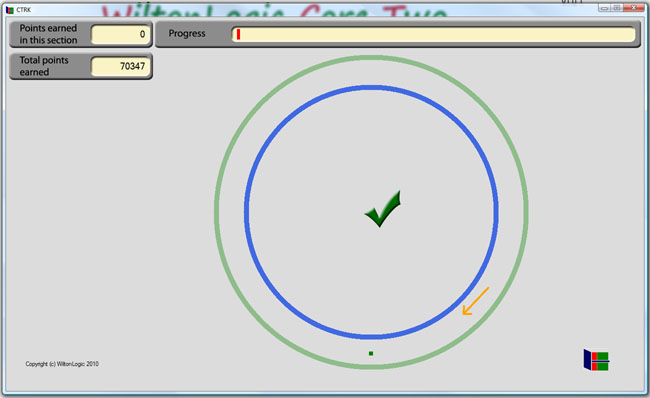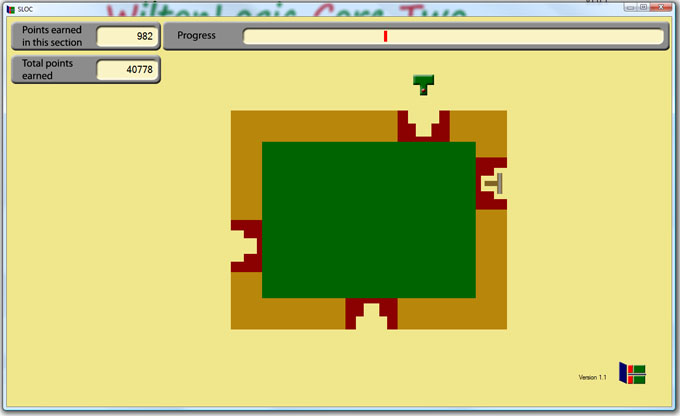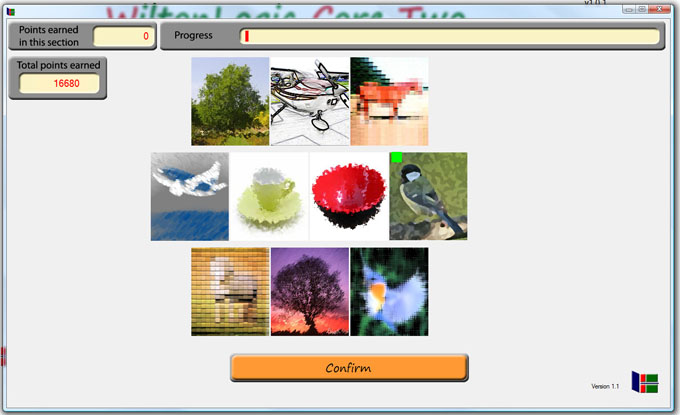Motor Control
Difficulties with motor control are prevalent in many neurological disorders. Motor control involves inteaction with the physical environment, and while it is difficult to replicate traditional approaches exactly using computer input devices and on screen displays, this technology can be used to address the problems in an analogous way. We have chosen two aspects of motor control to model in our system - line tracing and object manipulation, using the mouse or touch screen as input devices. Both procedures involve careful control of hand and finger movements.
In the first of the tests, the participant must move a small spot around four different shapes, a straight line, a circle (shown in the figure below), a square, and a plus sign. Once the first circuit has been completed, the colored boundaries close up, and the track for the spot becomes narrower. The computer measures how long it takes to complete the test and the frequency and duration of occasions when the spot goes goes outside the boundaries.

The second new procedure involves slotting shapes into sockets in around a target. In the first stage, the shape is a square, and socket is rectangular, so the direction of insertion does not matter. In the second stage (shown in the figure below), the shape is T-shaped, and the socket is T-shaped, so the participant must drag the shape into the socket in the correct direction. The final stage is similar, but the socket is narrower, so the fit must be more careful and exact.

List Learning
The third test we are working on is a simple list learning test, more similar to traditional memory span tasks than the working memory procedure we have been using in our pilot studies. We think this new list learning tests gives us more overlap in basket of tests with traditional assessments of short term memory used in testing Alzhemier's disease, for example.
In this test, the participant is shown a list of pictures. In training phase (illustrated in the figure), 5 pictures are used, but test phase there are 10 pictures in each of 5 lists. At the end of list presentation, there is a brief delay and then a display containing twice as many pictures as in the presentation list, half of which were in the list, and half of which were not. The participant must click on all the picture he/she recognizes from the original list. The small green sqaure marking one of the pictures in the figure indicates this picture has been selected.

These three tests are still at the product development stage. In this stage we must refine the computerized tutorial, and optimize the parameters. We also need to generate sufficient amount of picture material to support multiple versions of the list learning test.